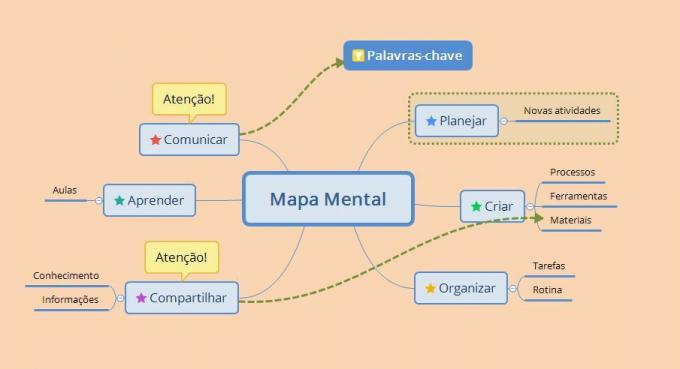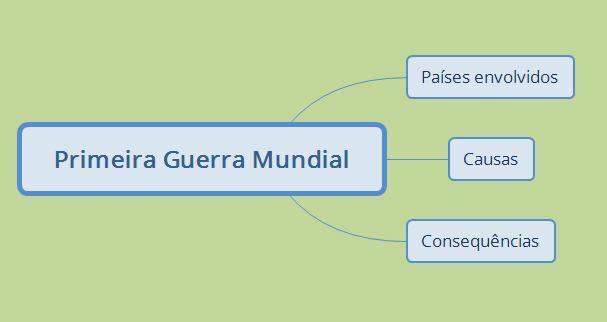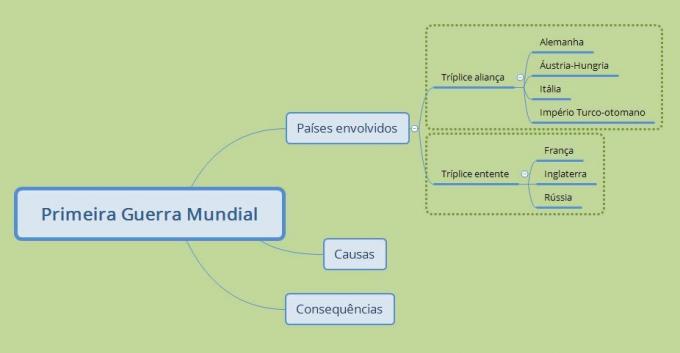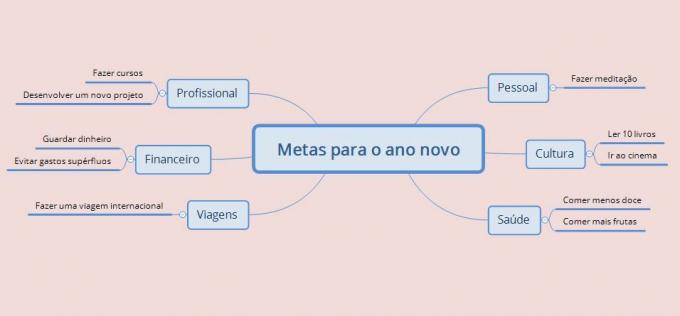A mind map is a diagram used to organize information visually. The mental map can be used for studies, for organizing tasks or structuring a plan.
At the center of a mental map is the objective or central idea, from which other information related to it originates. You can make multiple branches from each keyword.

Mind maps, as tools, were systematized in the late 1960s by the British Tony Buzan, a student of the processes of learning and memorization.
Visually organized, information is more easily understood and memorized. This is because, by associating one word with another, ideas are structured in a similar way to how the brain works.
Another resource that contributes to memorization is the colors, images and symbols, which can be used together with the key words. The association of information with images activates different regions of the brain and facilitates memory.
When preparing a mind map, it is important to use short keywords and avoid texts, as the more objective the structuring of ideas, the more organized the information will be.
How to make a mind map?
To make a mind map you need a blank sheet, pencils and pens, preferably colored. You can also use other features like stickers and photos.
Step by step to build a mind map
1. With pen and paper in hand or with the mind map program open, write the central idea in the center of the sheet. From the core idea, draw arrows to the information associated with the topic.
For example, if you are studying about the First World War, you can put as your first keywords: countries involved, causes of conflict and consequences.

2. Then, for each topic, you enter the information regarding the topic. For example, in the first keyword you can write the name of the countries that were part of each group in the war, as shown in the image:

3. For each topic, the process is repeated. After structuring all the important information, you will have a abstract about everything you need to remember about World War I.
You can make as many branches as you like and however you like, each mind map will be built according to the content and goals in building them.
If it is for your studies, the important thing is that you understand the content and that you are able to understand all the associations. But if the mind map is used to present an idea or plan, it is important to make the information very clear so that others can understand.
know what it is brainstorming.
Mind Map Example
Mind maps can also be used for the activity planning, for annotation of the content of classes and lectures, to the task organization and brainstorming.
In the example below, we have a mind map with goals for the new year:

The Importance of the Mind Map
If you are studying for an exam, for example, writing and acting on paper, is creating other mechanisms for your brain to be able to access that information at the time of proof.
Let's assume you are studying Newton's Laws and draw a picture to represent each of them on your mind map.
Halfway through the test you don't remember exactly what Newton's First Law is, but remember that you drew a picture of a vehicle pushing people forward. This image will help you remember that this is the Law of Inertia.
See also the meaning of conceitual map and visual communication.

